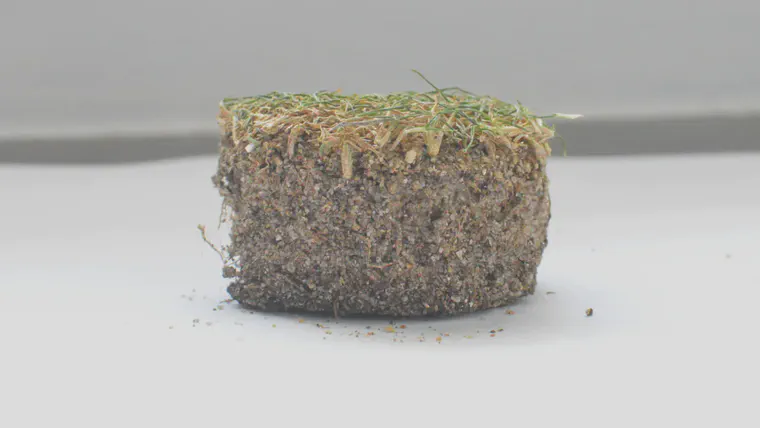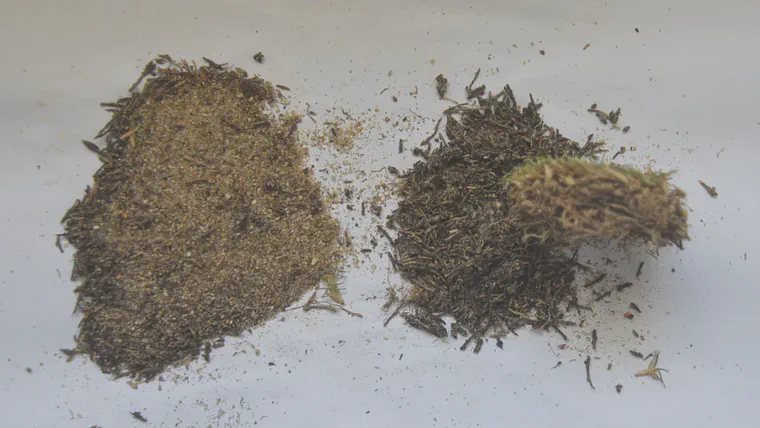Organic matter separation from turfgrass soil samples
I collected a lot of soil samples this month. My standard procedure after collecting samples is to air dry them before sending to the lab.
This is a dried sample from the top 2 cm (0.8 inches) of a Tifeagle bermudagrass putting green.

Previous tests of this same green measured the total organic matter, by mass loss on ignition, at about 16% (160 g/kg). That was by total organic matter testing, what I call OM246. The important thing about such testing is that no material is removed from the sample prior to testing.
The usual tests for soil organic matter remove all the big chunks of living and dead undecomposed plant material. Then the remaining soil, with all the thatch and stems and undecomposed material removed from it, is tested for organic matter. The result is a measurement of humus, basically, but is not a measurement of all the stuff that’s been removed. For adjusting topdressing and surface organic matter management, it makes a lot of sense to measure what’s going on, and that means the sample should include the thatch, and mat, and the incompletely decomposed material. All of it.
I took the dried sample and broke it up a bit to separate some of the big chunks of grass and thatch and undecomposed organic matter from the sand. I moved the big chunks to the right, and the sand to the left. Actually, passing this through a 2 mm screen would remove a lot of those dark chunks of organic matter still visible in this photo.

Topdressing sand will be added to this green, and perhaps some cultivation will be conducted, to manage the surface organic matter to the desired level. Measuring all the organic matter in the sample—which is going to happen with the upcoming OM246 testing of this sample—rather than screening it out, makes it easier to optimize the topdressing and cultivation work.